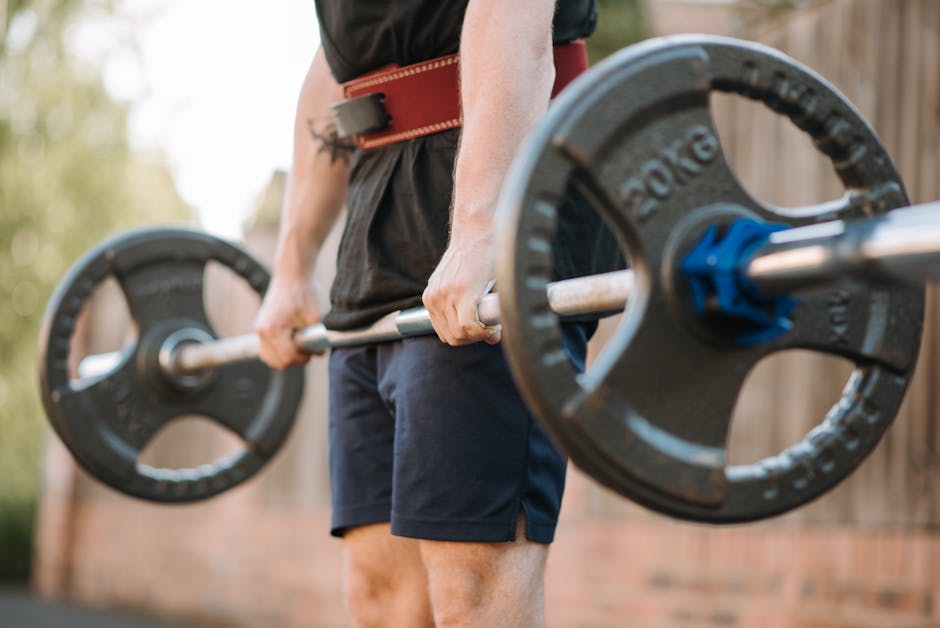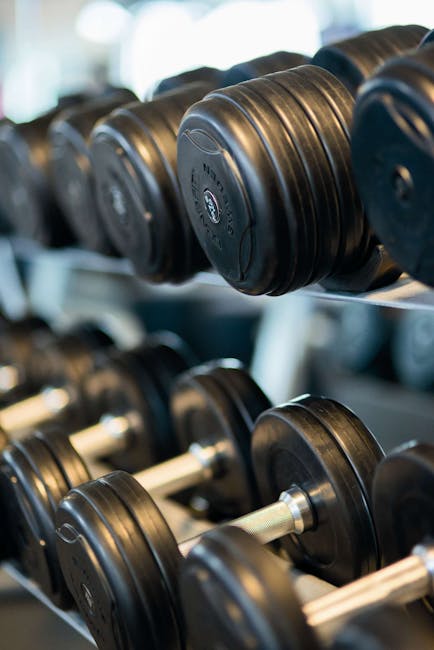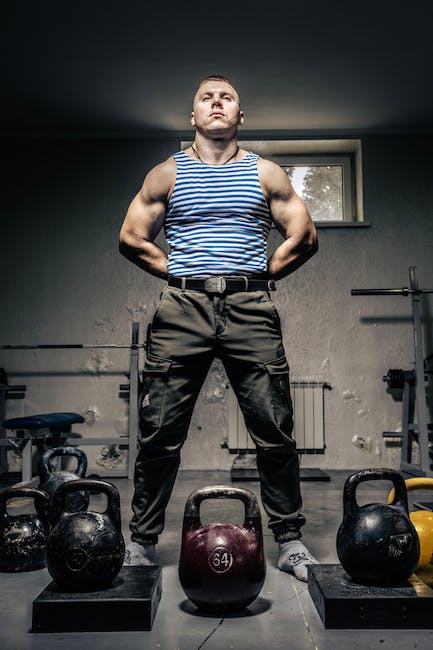Attention all gym rats, fitness junkies, and swole enthusiasts! Have you ever seen someone wrap a thick, leather belt around their waist before lifting weights and wondered, “What’s the deal with that?” Well, my curious comrades, let me introduce you to the magical world of weightlifting belts. These bad boys are more than just a fashion statement (although they do add a certain rugged charm to any workout outfit). In fact, they serve a very specific purpose that can help you take your lifting game to the next level. So, grab a protein shake and get ready to learn why weightlifting belts are the unsung heroes of the gym.
Contents
- 1 Introduction: Understanding the Need for Weightlifting Belts
- 2 Supporting the Core: The Primary Function of Weightlifting Belts
- 3 Reducing Risk of Injury: Secondary Benefits of Wearing a Weightlifting Belt
- 4 Proper Usage: Guidelines for Wearing and Adjusting Weightlifting Belts
- 5 Choosing the Right Belt: Factors to Consider When Selecting a Weightlifting Belt
- 6 And That’s a Wrap, Folks!
Introduction: Understanding the Need for Weightlifting Belts
So, you want to know why weightlifting belts are so important? Well, let me tell you, it’s not just because they make you look like a badass in the gym. (Although, that’s definitely a plus). The truth is, weightlifting belts serve a very important purpose in helping you to lift heavier weights while protecting your spine.
When you start to lift heavier weights, your body will naturally compensate by arching your back in an effort to stabilize your core. While this may help you lift the weight in the short-term, it can put a lot of pressure on your lower back and increase your risk of injury. A weightlifting belt can help to support your core and keep your back in a more neutral position, reducing your risk of injury and allowing you to lift heavier weights safely.
But weightlifting belts aren’t just for the heavy lifters out there. Even if you’re just starting out with light weights, wearing a belt can be beneficial in helping you to build a strong foundation and prevent injury as you work your way up to heavier weights. Plus, let’s be honest, they just make you feel like a superhero. Who doesn’t want that?

Supporting the Core: The Primary Function of Weightlifting Belts
Have you ever seen a weightlifter struggle with lifting heavy weights? It seems like it takes all their strength just to keep themselves upright. Well, praise the weights, we have a solution – the weightlifting belt!
The primary function of a weightlifting belt is to support the core and keep it tight while lifting weights. This helps to prevent back injuries and also allows for better stability when standing. But let’s be real, the real reason we use them is so we can look like we’re part of the cool weightlifting crowd.
A good weightlifting belt should have a thickness of about 10mm to ensure optimal support and come in a sleek design that matches our gym outfits. We also need to make sure we wear them tightly enough to prevent any slippage, but not too tight that we cut off circulation to our organs. Because let’s face it, passing out from lifting too much weight is not a good look. So go forth, strap on that weightlifting belt, and lift like a pro!
Reducing Risk of Injury: Secondary Benefits of Wearing a Weightlifting Belt
Okay, let’s be honest. We all know that wearing a weightlifting belt is primarily designed to protect our lower back while lifting heavy weights. But did you know that there are other benefits to using a lifting belt that aren’t as apparent? Here are a few secondary benefits that may surprise you:
- A Sweet Fashion Statement: There’s something undeniably stylish about strapping on a weightlifting belt. You go from looking like an ordinary gym-goer to a bona fide weightlifting wizard. Suddenly, you’re the envy of everyone in the gym who’s still wearing regular ol’ workout gear.
- Impressive Makings of Noise: Have you ever noticed how much noise a weightlifting belt makes when you cinch it up tight? It’s like a battle cry that lets everyone in the gym know you’re about to lift something heavy. Bonus points if you add a few grunts and yells for effect.
- A Secret Weapon for Setting PRs: Have you ever heard of the term “placebo effect”? It’s basically when something seems to work just because you believe it will. Well, the weightlifting belt can be like a secret weapon for setting personal records. Even if it’s only in your head, the belief that the belt is helping you lift more weight can be a game changer. Plus, if anyone tries to challenge your new PR, you can just tell them you had your secret weapon on.
So, there you have it. Wearing a weightlifting belt can not only protect your back but also boost your style points, make you sound like a Viking, and give you a mental edge in the gym. Now, go forth and lift heavy!
Proper Usage: Guidelines for Wearing and Adjusting Weightlifting Belts
So, you’ve decided to rock a weightlifting belt for that extra support and stability during your lifts. Good for you – but do you know how to properly wear and adjust it? Fear not, friend. Here are some guidelines:
The Hook-up:
- Place the belt around your midsection, just above your hips (you know, above the love handles).
- The buckle should be in the front, aligned with your belly button (unless you have an outie, in which case, center it).
The Adjustments:
- Make sure the belt fits snugly – but not so tight that you can’t breathe or perform your lift.
- If you need to adjust during your workout, do it in between sets. We don’t need Hulk Hogan-style belts flying off in the middle of the gym.
- When loosening the belt, unbuckle it and let it hang around your waist – don’t slide it down to your knees like sweatpants on laundry day (yes, we’ve seen it).
The Don’ts:
- Don’t wear the belt too high – it’s not a corset, and we’re not in the 19th century.
- Don’t wear the belt too low – unless you want to show off your SpongeBob SquarePants undies.
- Don’t use the belt as a substitute for proper form and technique – it’s not a magical accessory that will miraculously make you lift more.
Choosing the Right Belt: Factors to Consider When Selecting a Weightlifting Belt
When it comes to weightlifting, selecting the right belt can be the difference between breaking personal records or breaking your back. But fear not, dear reader, for I have outlined the key factors to consider when choosing the belt of your dreams (or at least, the belt that will prevent nightmares).
Strength: You may be a powerhouse in the gym, but can your belt keep up? Look for a belt made from sturdy materials such as leather or nylon, and check the weight capacity to ensure it can handle your maximum lift. And let’s be real, if you’re outlifting the belt, you may need to re-evaluate your priorities (or start shopping in the Strongman section).
Fit: A belt that’s too loose is about as useful as a t-shirt in a tornado, while one that’s too tight can leave you gasping for air like a fish out of water. Ensure your belt is snug but not constricting, and consider adjustable options if you’re prone to fluctuations in weight (or have a tendency to eat 10 donuts before leg day).
Style: Finally, let’s talk fashion. While a belt’s primary function is to protect your spine, there’s no reason why it can’t be a statement piece too. Whether you prefer a classic leather look or a neon nylon number, choose a style that suits your personality (and won’t clash with your lifting shoes).
And That’s a Wrap, Folks!
Well, there you have it! The purpose of weightlifting belts in all its belly-hugging glory. Next time you’re in the gym and see someone sporting a belt, you can impress (or annoy) them with your newfound knowledge.
Although they may look a little intimidating, weightlifting belts can be a game-changer for anyone serious about their gym gains. Just remember to always check with a professional before strapping one on – we wouldn’t want anyone to pass out mid-squat!
So, go forth and lift heavy, folks. With the right accessories and a little bit of know-how, you’ll be reaching those fitness goals in no time.
Until next time, stay strong and happy lifting!








Leave A Comment